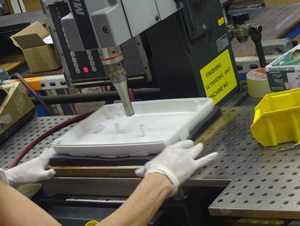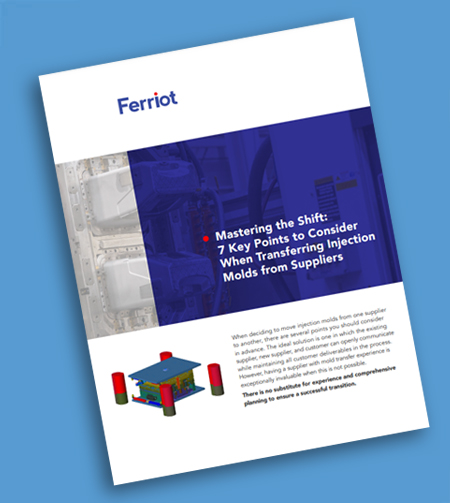When it comes to plastics manufacturing, choosing ultrasonic welding services compared to traditional welding and adhesive methods offers a variety of benefits.
- Traditional methods of welding plastic components require higher temperatures or chemical adhesives.
- Ultrasonic welding takes less time.
- An ultrasonic welding machine doesn’t require as much power and/or fuel.
- Results of ultrasonic welding are more reliable than order methods.
In short, ultrasonic welding is faster, safer, and cheaper than other means of bringing plastic components together.
Read on to learn more about what ultrasonic welding is, how it compares to traditional methods and some considerations you should take before selecting a plastics manufacturer.
What is Ultrasonic Welding?
 Ultrasonic welding is the process of converting electrical current into high-frequency ultrasonic vibrations. Those frequency vibrations move so fast that it causes a friction which melts materials together to create a solid-state weld. This process is frequently used for plastics but can also be applied to some metals.
Ultrasonic welding is the process of converting electrical current into high-frequency ultrasonic vibrations. Those frequency vibrations move so fast that it causes a friction which melts materials together to create a solid-state weld. This process is frequently used for plastics but can also be applied to some metals.
An Ultrasonic Welder Compared to Traditional Methods
Ultrasonic welding plastic typically takes mere seconds from part insertion to part removal from the ultrasonic welding machine. Other methods of welding require the manufacturer to spend much more time, which also means a higher cost for power and/or fuel. More time is needed to reach higher temperatures for welding, and to allow the part to cool. With adhesives, parts will also need to cure for an additional amount of time compared to ultrasonic plastic welding.
The key downside is that the ultrasonic welds will have a depth of less than a millimeter. So, that means it is not practical in industrial or commercial instruction. However, it’s ideal for manufacturing components in various markets including consumer goods, military electronics, medical devices and more.
Risk Considerations When Selecting a Plastics Manufacturer
When evaluating a plastics production method, risk factors are important to consider. For example, with traditional welding requiring higher temperatures, you have the risk of an open flame and flammable fuels. Also, those fuels and adhesives can create toxic fumes. This means a few things. First, added risk for the manufacturer’s employees. Second, the added cost of additional training, personal safety equipment (PSE) and facility safety precautionary measures.
The high frequency produced by the machine is one key safety concern when using the ultrasonic method. This could potentially damage someone’s hearing, but this risk is simple to mitigate and much less dangerous than risks posed by other welding methods. An ultrasonic welding machine can be placed within a safety cage and workers are required to wear hearing protection.
Overall, when it comes to manufacturing plastic components, it’s easy to see why ultrasonic welding is the preferable option.
Are you working on a project that would be well-suited for ultrasonic welding? If so, please schedule a consultation to learn more about Ferriot’s contract manufacturing services. Or, download our worksheet on Plastics in an Industrial Setting by click on the below image.
Learn more:





